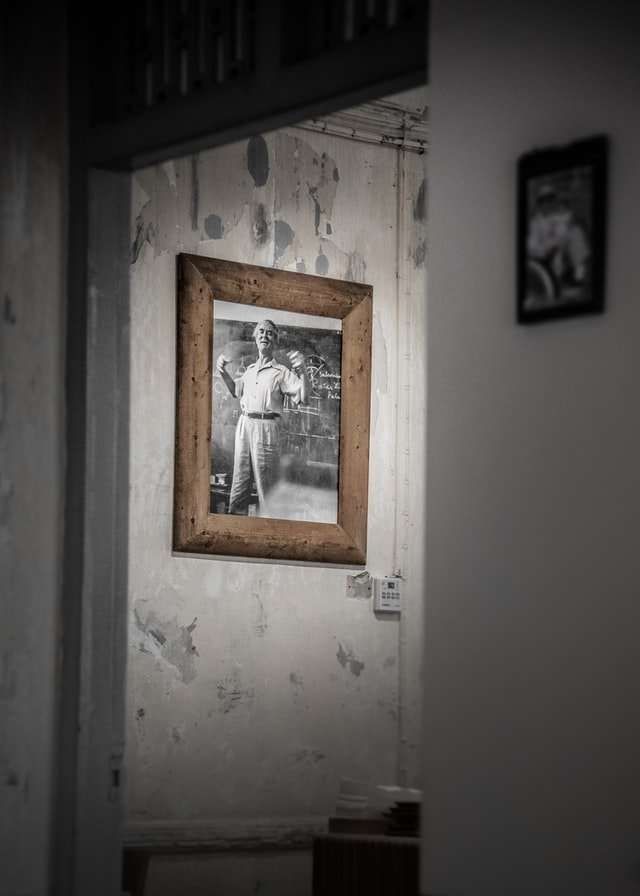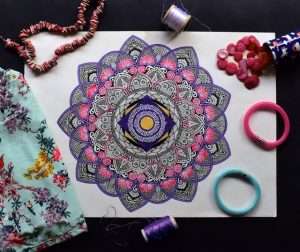Let’s see, what should I paint today? I feel like getting out of the office. Maybe a nice sunny day. Not too cold.
Hmm, that’s not quite right. Too warm for snow.
Oh wait, I know! The moon! It’s almost full this week…gosh, it’s been so long since I’ve done the moon.
You see how it goes. This is how artists end up with their careers completely painted into a corner despite having enough passion to go around for all kinds of other paintings.
Thing is, there is no way to get around the need to study and understand your medium and surroundings. No one said you have to paint what you feel like painting at any particular time; if you did, you’d be walking down a very slippery slope toward an artistic career that looks more like that of a dilettante than an artist in any real sense of the word.
And yet we all find ourselves fighting the urge to paint what we want because we are so “inspired” by our latest idea or whatever else might be on our minds…
If you’re the sort of person who goes to art museums, you’ve probably seen paintings like this:
They’re pretty boring. This is boring for a very good reason: it’s easy to paint. It’s just a big blob. If you want something more interesting, you have to think about what’s possible and impossible in your medium, and how that affects your decisions.
Trying to do something that can’t be done in oil paint will just make a mess. The most important decision for any painting is what the surface will be like, because that determines so much else about what you can do.
What does it mean for a surface to be “smooth”? A smooth surface is one where two adjacent parts are close together; specifically, the difference between them must be smaller than the width of a single pixel. A simple example of this is an area with uniform color; there are no edges between adjacent pixels, so they’re all touching each other and it looks smooth.
Another common way to get smooth areas is by making them large enough that our eyes don’t see individual pixels; an illustration might have big areas of solid color, or long stripes with only slight variations between them, or some other arrangement that our minds interpret as smooth.
But
It’s a good bet that anyone who’s ever painted a picture has dealt with the dreaded “art block.” After all, art is subjective, and even though we may feel we’re doing great, someone else might not. That was the case for me when I tried to finish up a few paintings that were due at a gallery near the end of last year. The problem: When I would go to work on them, it felt like I was “trying” too hard. And trying too hard to paint makes for poor results.
I had gone from working in oil paints to acrylics (easier to clean up) and really struggled trying to get back into using oils again. The problem: I had created a series of paintings based on a single scene (the first time I had ever done that). When I’d move from one painting to another, my work schedule would change dramatically…sometimes painting for eight hours straight without taking a break. Additionally, my painting area was getting messy because of the spills and drips and splatters of different colors…not to mention that some of the paintings had already been sold and were hanging on walls of friends’ homes! And then there was my overall lack of focus on these paintings because they weren’t going anywhere in terms
Recently, I found myself in a difficult situation. I had signed up, reluctantly, to paint a mural at the local bowling alley. It’s not that I have anything against painting murals. In fact, I love painting murals, and it’s been several years since I had an opportunity to do so. The problem was that my original design was far more ambitious than what the client (in this case, the bowling alley) wanted.
I decided to go through with the project because of two reasons: 1) The bowling alley is a place where I spent much of my youth and 2) They were going to pay me $
I’ll start off by saying that my art has been suffering lately because of my surroundings. I moved into a new house and it’s taken me a while to get everything situated. The amount of work I have to do outside of the house is overwhelming, and painting isn’t at the top of that list.
I’m also very insecure about my skills and ability as an artist, which makes me want to avoid painting. It’s hard for me to see where I’m going wrong or how to improve because I feel like I’m not doing anything right anyway.
So what am I doing? Well, one thing I’ve discovered is that if you really want to improve your skills, you need to find a way to use them as much as possible in every day life so they become second nature to you. If you paint all the time, your skills will get better faster than if you don’t.
One of my favorites things about illustration is the endless possibilities of what you can do with it. Every new job is a chance to learn something new, and every new skill lets you tackle a whole set of problems in a new way.
Thing is, there’s so much to do that it can be hard to know where to start. It can be easy to avoid doing anything at all by getting stuck on one thing, or just not knowing where to go next. And when I’m in this kind of rut, it helps me to talk through the problem with someone else.
The last couple months I’ve been trying to work on improving my watercolor skills. I’ve always loved watercolors, but I hardly ever use them because I don’t have a very good workspace for them and because I don’t have much experience working with them. My usual mediums are gouache and ink, so working with watercolors feels very different from what I’m used to.
So today I thought I’d share some of the stuff that’s been helping me get unstuck. This is a mix of specific advice and encouragement, but there are two big ideas here:
1) It takes practice to get good at any medium. Practice doesn’t just mean
If you are waiting for inspiration to strike, stop waiting. Don’t wait for the Muse to arrive; she’s as unreliable as a catwomans love life. Don’t wait for the mood to strike, either. It never does, or if it does, it goes away again just as quickly.
Don’t put off work until some time when you will be more “in the mood” or inspired. That is procrastination.



